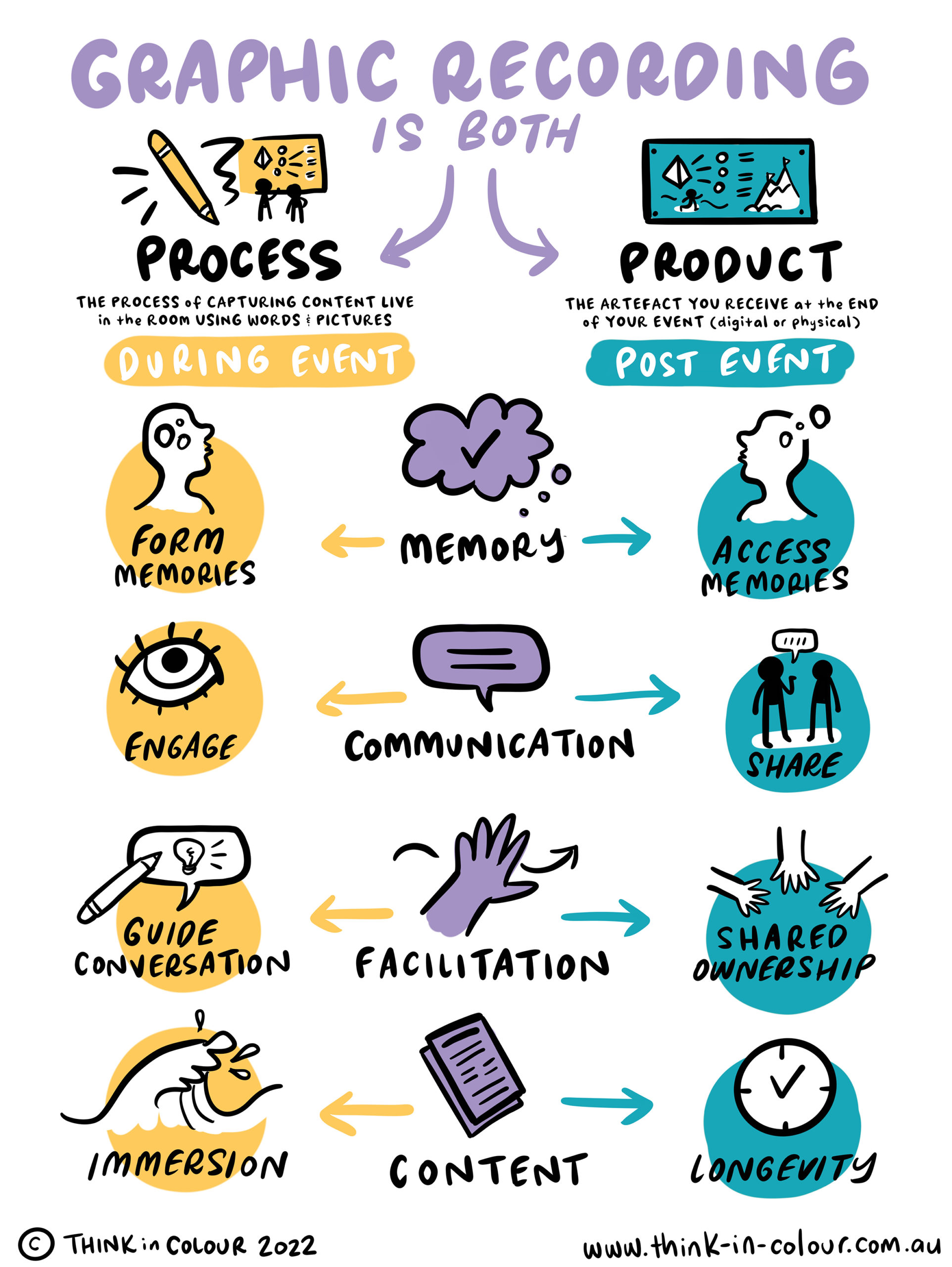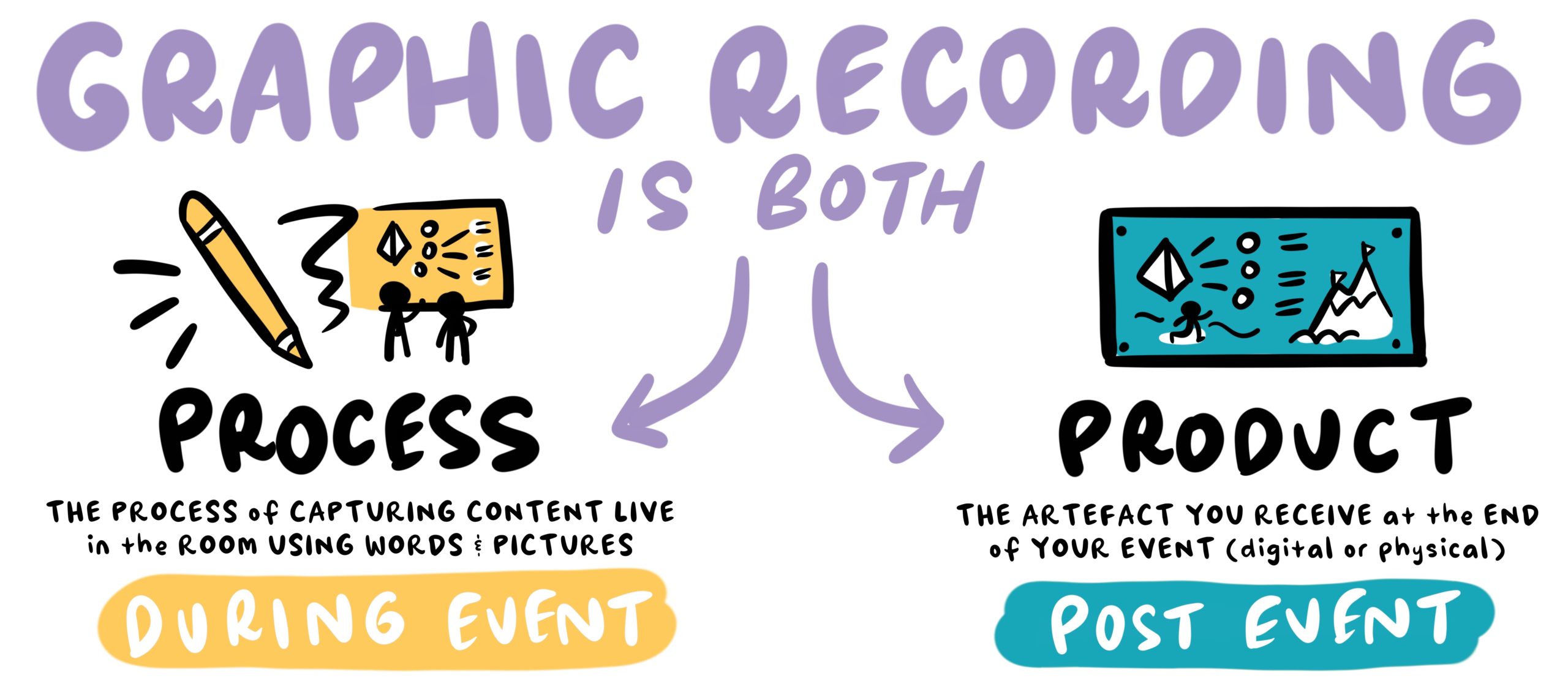A thing of beauty is a joy forever
“A THING of beauty is a joy forever:
Its loveliness increases; it will never
Pass into nothingness; but still will keep”
– John Keats
In the industry of Graphic Recording, as in so many other design industries, there is a constant need to find balance between process and product – form and function.
We talk a lot about the importance of content. Indeed, one of the catch-cries of the fabulous Brandy Agerbeck (Author of The Graphic Facilitators’ Guide) is “Content is King!”. This is irrefutably true. As Graphic Recorders we are content-capturers, synthesisers, and sense makers. Our role is first and foremost to reflect your ideas.
What we don’t talk about enough though, is the importance of beauty in our work. Without doubt, there is still significant value in using visual language that isn’t “beautiful” – this speaks to the process or function side of coin. Even the simplest of images will still help us to better engage in, understand and remember content.
But what additional value are we missing out on if we don’t also pay attention to the product as we do to the process?
Here’s a little diagram that illustrates the value and the balance between the two:

There seems to be a misconception that paying attention to the artistry in Graphic Recording somehow distracts us from the content, but it’s quite the contrary. Having a final product that’s sweet on the eye will only serve to deepen and broaden the expression of your content. Here are some reasons why:
1. Eliminate Distraction
A poorly executed graphic recording or illustration has the potential to frustrate rather than engage its audience. If text is messy and hard to read, or icons and drawings are unclear, this can be a cause of distraction. A clean, practised and well-executed style will ensure the illustration is clean, clear, easy to navigate and enjoyable to look at.
2. Engaging & sharing
A beautiful illustration will capture the imagination and excitement of the audience. This will often lead to the piece of work (and most importantly – the content within it) to be talked about (at the time and long after), photographed and shared within teams and communities. This creates a buzz around the event and subject matter, and spreads your message further.
If you are sending digital files to your audience and broader network via email or online gallery, the chance of people engaging in and reading through your content is much higher if the final product looks attractive.
3. Longevity
At this year’s IFVP (International Forum of Visual Practitioners) Conference in Washington DC, the amazing comic book king and author Scott McCloud asked how many Apple users in the audience still had their original packaging… just about all of us did. It’s just so goddamn lovely to look at! This is the power of good design.
If people love to look at the artefacts you create, they will live on much longer than their less-attractive counterparts. I am often thrilled to receive feedback that outputs from sessions I’ve worked on are hanging in offices and tea rooms around the country.
If the output from events is framed / printed / hung / wallpapered… The message is on display and your content lives on. It will continue to give it’s gifts by engaging and re-engaging all those that see it.
4. Emotion
I have spoken a number of times about the power of imagery – in particular humans and facial expressions – to increase the emotional and personal connection to content. If this is not done correctly however, it’s possible to inject the wrong emotion into your product, confuse, or even alienate your audience. When done well, it creates a powerful relationship between the viewer and the message.
5. Ownership
In a workshop-style situation, working with smaller groups and capturing lots of voices, one of the great benefits of Graphic Recording is that’s it’s a visual way of creating shared ownership in the group.
Reflecting the ideas of your participants in an attractive and inviting way can be a very empowering experience for them. Bringing life to their ideas and vision can help them to take pride in their own thoughts and contribution, and start to imagine what that idea might look like. A well-illustrated idea may also assist your participants to find the confidence and language they need to further express themselves.
So what should you do?
If you’re a Graphic Recorder… Put aside some time to work on your skills in drawing and lettering. Get acquainted with design elements and principles, and consider how they might serve your work. Do some short courses in calligraphy and lettering. Practise drawing facial expressions (a great resource for this is the Grimace Project, or just look at your emoji keyboard for inspo!). Ask your peers and clients for constructive feedback, and work on your weaknesses. Take Think in Colour’s Online Course, Listen-Think-Draw to develop and refine your skills.
If you’re looking for a Graphic Recorder… Consider what you would like to do with the outputs from your event, and find a Visual Practitioner with a style that you and your audience like and relate to. Make a plan about how you’ll use the outputs after the event and let your GR know.





